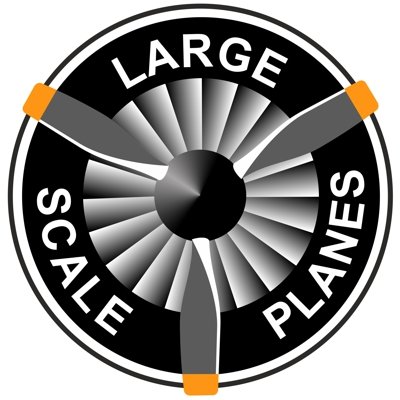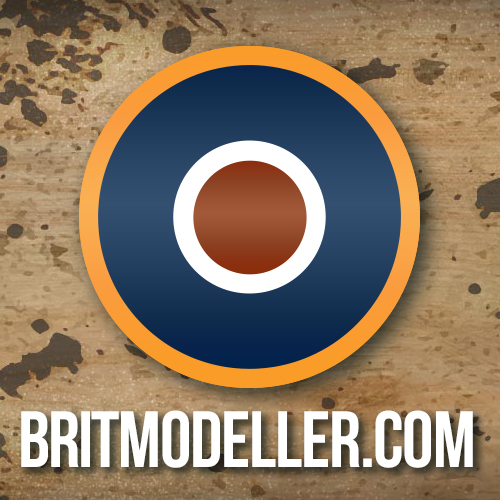- Thread starter
- #21
Vic Balshaw
Major General
Working on it, thinking undercoat needs to be yellow zinc chromate on an aluminum base before much faded and worn camo colours.Get all your ducks inna row First.
Any thought folks.
Follow along with the video below to see how to install our site as a web app on your home screen.
Note: This feature may not be available in some browsers.
Ad: This forum contains affiliate links to products on Amazon and eBay. More information in Terms and rules
Working on it, thinking undercoat needs to be yellow zinc chromate on an aluminum base before much faded and worn camo colours.Get all your ducks inna row First.
Many thanks George, great little site.Might be of some help Vicn near the bottom... Interior Colours of US Aircraft, 1941-45, Part III
Screen shot!You're welcome. For some reason I can no longer get to the colour chips to show and when I tried to access it from another site, this pops up
The early primer coat would have been "salmon" over untinted (yellow) zinc chromate, so you wouldn't find Yellow Green or Interior Green in the wheel wells.
The cockpit color for Vought's Birdcage Corsairs originally was Dull Dark Green, not black as sometimes listed. In spring 1943 BuAer advised Vought to finish up with their stocks of Dull Dark Green and switch to a color that would eventually be known as Interior Green. Vought responded that they had stocks of aluminized zinc chromate and asked permisssion to use up those stocks too. BuAer agreed, and it appears that all Vought Birdcages were delivered in Dull Dark Green or aluminized zinc chromate. The switch to Interior Green seems to have first come with the F4U-1A.
Aluminized zinc chromate was a bright candy-apple green. With the addition of black pigment it became a cockpit color called Yellow Green (not used in Corsairs). With out the aluminum paste (just zinc chromate and black) it became our familiar Interior Green in 1943.
In spring 1943 (as production was shifting to the "-1A"), the Navy ordered manufacturers to discontinue use of Salmon and Dull Dark Green as soon as existing stocks were depleted - for the Corsair this seems to have happened sometime in the summer of 1943. For most interior surfaces, Vought, Brewster, and Goodyear received permission to apply one or two coats of untinted zinc chromate (yellow) primer - not Interior Green. Main gear wells were still camouflaged [white], while the after well was generally not.
The following notes apply to Birdcage Corsairs only - there were additional variations on later models.
The aircraft was expected to have two coats of primer over most assemblies. The first coat was untinted (yellow) zinc chromate; the second coat was to be tinted to ensure that there were no "holiday" areas that received only one coat. As such, there should be "salmon" nearly everywhere.
The cockpit also needed a coat of darker paint to reduce reflections on instrument faces and windows. Early on this was Dull Dark Green.
The inside of the engine cowl also needed an additional finish coat to reduce the posibilities of flash fires. This was usually the same Light Gray camouflage lacquer used on Corsair undersurfaces.
When BuAer decided to step away from "Salmon" and Dull Dark Green, Vought got a special waiver on the two coats of primer. The first coat was still untinted (yellow) zinc chromate. If the underlying metal was Alclad (aluminum alloy coated with pure aluminum) no second coat was needed. If the underlying metal was aluminum alloy, the first coat of untinted zinc chromate was stamped "1st COAT" in black ink; a second coat of untinted zinch chromate was then applied. Since the primer was transluscent, the black stamped notice would appear green under the second coat.
With the Navy dropping Dull Dark Green, the cockpit still needed to be darker. BuAer recommended Interior Green, but another waiver allowed Vought to used that bright aluminized zinc chromate. Note that some subassemblies were delivered in Dull Dark Green before being introduced to the bright green cockpit.
Instrument panels and side consoles were Instrument Black, a satin finish.
Wheel wells were nearly always painted in the underside camouflage color, thought there were a handful of exceptions.
There was still plenty of Light Gray in stock, so that paint was still used inside cowlings into production of the -1As.
Remember that US Corsairs used dope on fabric (all the way to the wing tip edges on wings) and lacquer on aluminum. The two paints were spec'd to the same color charts, but the paints rarely matched when fresh, and certainly never matched as they weathered.
A final note on wear over the wing roots - the Birdcage Corsair leading edges were smoothed, just like we expect on P-51 Mustangs. This was then overpainted with two coats of primer (see above) and two coats of camouflage lacquer. As boots wore though the camouflage, the primer came off too - you would see the white putty rather than the primer of unpainted aluminum.
From the Maintenance and Erection Manual for the F4U-1:
Tinting Medium USN Spec. TT-I-511 Indian Red Paste. Qty 1 ½ lbs. Valentine, NY.
Indian Red is a dark red-brown color and is widely available as an artist oil paint sold in art supply stores and full line hobby shops.
The Indian Red was to be prepared as follows:
2 oz. of Indian Red mixed in 2 gals. of toluol or equivalent (AN-T-8b toluol substitute, similar to lacquer thinner) solvent.
This mixture was to be used to reduce 1 gal. of zinc chromate package material (un-reduced zinc chromate primer). This mixture was known as TINTED PRIMER (my caps). This comes from pages 1106 and 1110 of the F4U 1 Corsair Erection and Maintenance Instructions.

 forum.largescaleplanes.com
forum.largescaleplanes.com

 forum.largescaleplanes.com
forum.largescaleplanes.com

 www.britmodeller.com
www.britmodeller.com
The F4U section of the William Reece document that circulates modeling forums:
F4U-1 Birdcage Corsair:
Cockpit: Well this is tricky. The best evidence is black. Photos of F4U-1s taken at the time show the cockpits as being a very dark color. The F4U-1 E & M manual calls for Dull Dark Green. Photos and some wrecks show flat black. A photo of "Pappy" Boyington in Bruce Gamble's book, The Black Sheep, shows him sitting in a Birdcage with a black armor plate and upper seat. This a/c also has no headrest. All other areas of the F4U-1 Birdcage Corsair would normally be 'Salmon'. Salmon is a pale pinkish/brown primer made by mixing Indian Red pigment with Zinc Chromate Yellow. The closest Munsell match is 2.5 YR 6/8 or between FS 32276 and FS 32356. This color was applied to the whole F4U before the final camouflage finish. The landing gear bays were this color. The insides of the main gear doors were Light Gray. Sometimes this was only over spray on the Salmon. Note: there were canvas covers on the inner and outer wheel bays that were either Olive Drab or Light Gray. The closest paint that I have found to the Salmon samples in my possession is PollyScale Railroad, Southern Pacific Daylight Orange. The E & M manual calls for the wheel bays, engine cowling and accessory cowlings to be painted in Non-Specular Light Gray to match the underside of the aircraft. But, recovered wrecks show these areas to be Salmon. Color photos of early Corsairs show the cowling interior to be Non-Specular Light Gray.
F4U-1A Corsair:
Cockpit: FS 34151 Interior Green. All other areas of the F4U-1A were Zinc Chromate Yellow, FS 33481. Early F4U-1A's may have been Salmon. Landing gear: Light Gray or Aluminum Lacquer. This was true well into the F4U-4 production. Some a/c may have had Insignia white landing gear after overhaul or repaint.
F4U-1D Corsair:
Cockpit: FS 34151 Interior Green. The area above the consoles was black. This matches the Navy's directives at the time very well. Inside of the wheel bays and engine cowling were also Interior Green FS 34151. Wheel bays could have been Zinc Chromate Yellow, FS 33481. Landing gear was Light Gull Gray or Aluminum Lacquer. After overhaul aircraft could have had the landing gear, wheel centers and wheel bays painted Glossy Sea Blue.
F4U-4 Corsair:
Cockpit: FS 34151 Interior Green. The area above the consoles was black. Inside of the engine cowling was Zinc Chromate Yellow, Interior Green or possibly Flat Black with the area ahead of the cylinder seal in Glossy Sea Blue. All other visible areas were Glossy Dark Sea Blue similar to the F6F-5. Landing Gear: Aluminum Lacquer or Light Gray. After overhaul aircraft could have had the landing gear, wheel centers and wheel bays painted Glossy Sea Blue.
the source: Early war F4U-1 Birdcage Corsair salmon primer questionsEarly on, Vought and Brewster had quality control problems at their Corsair plants. The original spec for the production Corsair called for 5 coats of zinc chromate. However, within months, corrosion commenced to appear. Vought and Brewster reacted by painting the pink-tinted primer over the top of the ZC. The thinking was that by doing so, they'd get at least two visible coats of anti-corrosive on the plane and staunch some of the oxidation issues. This went on for several months before the manufacturers returned to all ZC. Quality control issues at the plants gradually abated and the pink primer disappeared into faint memory. Grumman and Douglas never experienced the problem. I was told this story thirty years ago by the former chief of airframe inspections at the Navy's Alameda O&R facility.
I wouldn't chuckle.Good lord, this painting thing is worse than getting Annie to decide what color I paint my workshop walls!!!!
Kinda glad my GB61 build id an F4U-1D. This thread will prove to be quite the library of Corsair painting.